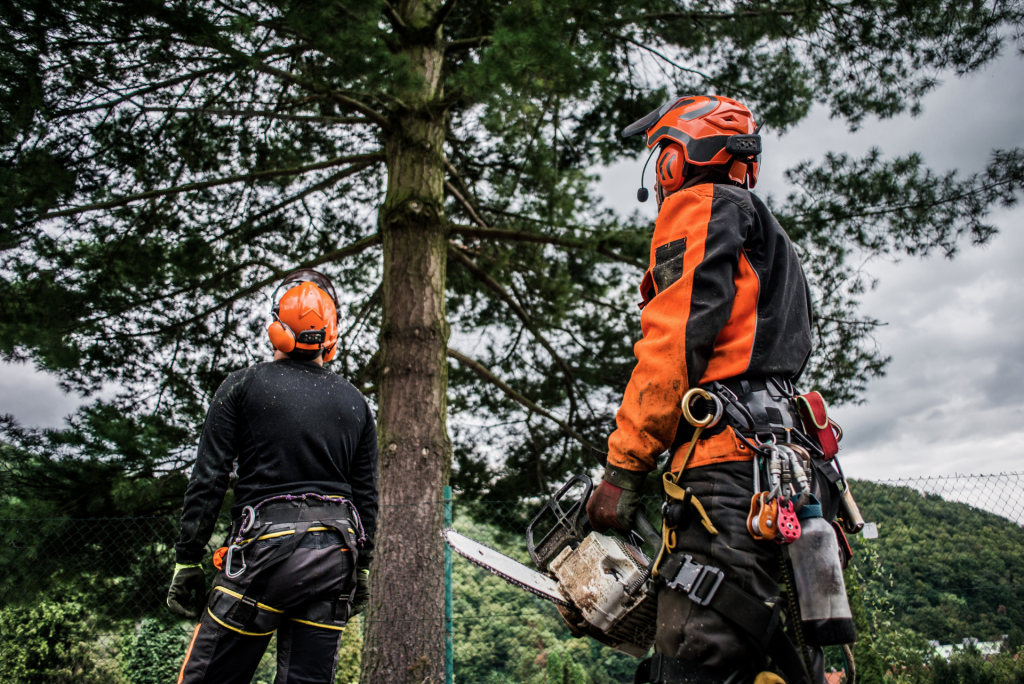Removing a large tree can take from several hours up to a few days. This depends on how big and where the tree is. It’s important to plan well, which includes getting permits and sorting out safety stuff.
Sometimes, you might need to check how the tree removal affects the environment or fits with local rules, which can also change how long things take. If you have a good plan and the right tools, it makes everything faster.
After taking the tree down, you need to clean up and get rid of the tree bits. It’s also good to check the area and the soil after to make sure everything goes back to normal. Paying attention to all these things helps make sure the tree removal goes well.
I’ll tell you more steps soon to help you understand the whole process of taking down a tree.
Permits and Regulations
Before you cut down a big tree, it’s important to talk to your local authorities to see if you need any permits. Click here to find out more about your specific area’s regulations. Depending on where you live, the rules and required permits can be different, so it’s good to check this early.
In some places, you might also need to do an environmental impact assessment. This checks if cutting down the tree will harm the environment around it, helping to make sure the removal does as little damage as possible.
Getting permits can sometimes take a while, so it’s wise to start this process early. The size of the tree, where it is, and local rules can all affect how long it takes to get the permits you need. Planning ahead can help you avoid any problems with your plans to remove the tree.
If you make sure to ask about all the needed permits and follow the rules, you can make the tree removal go smoothly and stay within the law.

Tree Assessment and Planning
Before you start removing a large tree, it’s important to check the tree’s condition carefully and make a clear plan for its removal. First, you need to check if the tree is healthy or if it poses any danger. A professional arborist can help with this by checking the tree’s structure, looking for disease, and assessing its stability. This check is crucial as it guides how to safely remove the tree, especially if it needs to be done quickly because the tree is a danger.
After assessing the tree’s health, you must create a detailed plan for taking it down. This plan should list the equipment you’ll use, the techniques for cutting the tree, and the safety steps you’ll follow. In situations where you must remove the tree quickly, it’s very important to plan both carefully and quickly to keep everyone and everything safe.
Equipment Setup and Safety Measures
Before you start removing a tree, make sure to set up all the necessary equipment and confirm that safety measures are in place. It’s very important to keep safety in mind to ensure that the tree removal goes smoothly and without any incidents.
Always check that all the equipment is well-maintained to work at its best. Keeping equipment in good condition is key to avoiding malfunctions that might cause accidents while removing the tree.
When you’re setting up the equipment, make sure that every tool is working properly. Also, everyone involved should wear the right safety gear, including helmets, goggles, gloves, and safety harnesses. It’s crucial to prioritize safety by keeping clear communication among team members. This helps everyone stay informed and work together during the removal of the tree.
Also, take some time to carefully check the work area for any possible dangers that could harm the crew or people nearby.
Tree Removal Execution
Before you start cutting down trees, please make sure to check all safety steps. Choosing the correct way to remove a tree depends on how big it is, where it is, and what’s around it. For big trees, you might want to use methods like directional felling or cutting it into parts. This makes sure the tree comes down safely and in control.
Managing your time is also key when you’re taking down a tree. You need to plan how you’ll do it. Think about how tall the tree is, how thick it is, and which way it leans. Also, look out for any obstacles like houses or power lines. Using tools like chainsaws, ropes, and other equipment well can make the job quicker and keep everyone safe. Always keep an eye on how steady the tree is as you work on it to avoid any surprises.
Cleanup and Debris Disposal
Ensure you dispose of tree debris properly by sorting it into piles designated for recycling, composting, or disposal. Once you finish removing the tree, it’s important to clean up and dispose of the debris quickly. The cleanup time can vary, depending on how big the tree was and how much debris it left behind. Bigger trees usually mean more cleanup work, which might take several days to finish properly.
When you think about how to dispose of the debris, consider its impact on the environment. You can recycle tree debris by chipping the branches and using the wood chips for landscaping or by composting the organic material. Recycling reduces waste and helps the environment by supporting sustainability. Composting is also good for the environment because it lets organic matter break down naturally and improves the soil.
If you can’t recycle or compost, make sure to dispose of the remaining debris according to local rules to keep the environment clean and safe. By focusing on responsible debris disposal, you help make our ecosystem greener and healthier.